Name: Rhaetian Railway in the Albula / Bernina Landscapes
Address: Rhätische Bahn AG, Bahnhofstrasse 25, CH - 7001 Chur, Switzerland
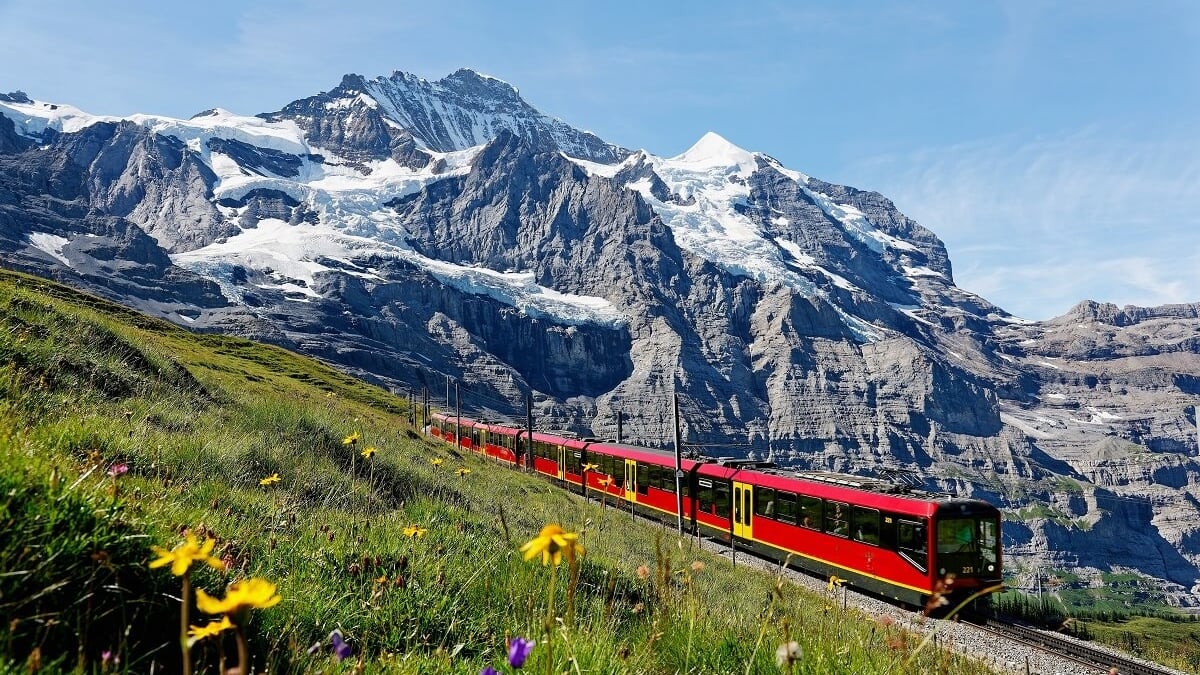
Tourism Powerhouse: Introducing All 12 UNESCO World Heritage Sites in Switzerland!
Switzerland, a global tourism powerhouse, boasts a total of 12 UNESCO World Heritage Sites—3 natural heritage sites and 9 cultural heritage sites. For world heritage hunters who want to see these places with their own eyes and for those who long to experience Switzerland's majestic nature, here is a complete introduction to all 12 of Switzerland’s World Heritage Sites!
table of contents
[x] close
Tourism Powerhouse: Introducing All 12 UNESCO World Heritage Sites in Switzerland!
- 1. UNESCO World Heritage: "Rhaetian Railway in the Albula / Bernina Landscapes"
- 2. Old City of Bern
- 3. Swiss Alps Jungfrau Aletsch
- 4. Three Castles, Defensive Wall and Ramparts of the Market-town of Bellinzona
- 5. The Architectural Work of Le Corbusier – An Outstanding Contribution to the Modern Movement
- 6. Prehistoric Pile Dwellings around the Alps
- 7. La Chaux-de-Fonds / Le Locle, Watchmaking Town Planning
- 8. The Swiss Tectonic Arena Sardona
- 9. Lavaux, Vineyard Terraces
- 10. Monte San Giorgio
- 11. Benedictine Convent of St John at Müstair
- 12. Abbey of St Gall
- ◎ Summary of All 12 World Heritage Sites in Switzerland
1. UNESCO World Heritage: "Rhaetian Railway in the Albula / Bernina Landscapes"

The Rhaetian Railway is one of the largest private railway companies in Switzerland. Its advanced railway engineering, which was built without harming the natural environment of the Alps, and the stunning scenic route earned it a spot on the UNESCO World Heritage list in 2008 under the name "Rhaetian Railway in the Albula / Bernina Landscapes."
This World Heritage Site straddles the border between Switzerland and Italy and includes 196 bridges and 55 tunnels. It is the third railway-related site in the world to be designated as a World Heritage Site, following ones in Austria and India. Rail fans will be thrilled—traveling the full length of both the Albula and Bernina lines means you’ve fully experienced the registered heritage site.
The Albula Line, which opened in 1904, includes scenic masterpieces of railway engineering such as the Landwasser Viaduct (65 meters high) and the Albula Tunnel (5,866 meters long), which crosses the watershed between the Rhine and Danube rivers.
The Bernina Line, which opened in 1910, runs from St. Moritz to Tirano, Italy. This spectacular route lets you enjoy views of the 4,000-meter-class Alpine peaks. During the summer tourist season, popular sections of the line are often fully booked, so early reservations are recommended.
2. Old City of Bern
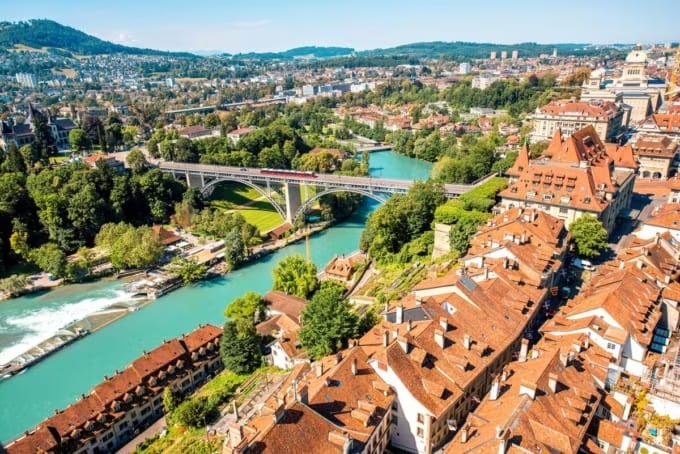
Some people mistakenly believe Geneva is the capital of Switzerland, but it’s actually Bern. The beautiful old town area, surrounded by the Aare River, was registered as a UNESCO Cultural Heritage Site in 1983.
With so many highlights to see, you might not know where to start—but it’s a lovely city worth spending a full day exploring.
Begin by climbing the tower of the Bern Cathedral, visible from anywhere in the old town, for a panoramic view of the entire area. Enjoy a walk through medieval streets featuring the Zytglogge (Clock Tower), which has been a city landmark since the 16th century, 11 elaborately decorated fountains lining the streets, and Europe’s longest arcade shopping street.
Name: Old City of Berne
Address: Kramgasse 40, 3011 Bern, Switzerland
3. Swiss Alps Jungfrau Aletsch
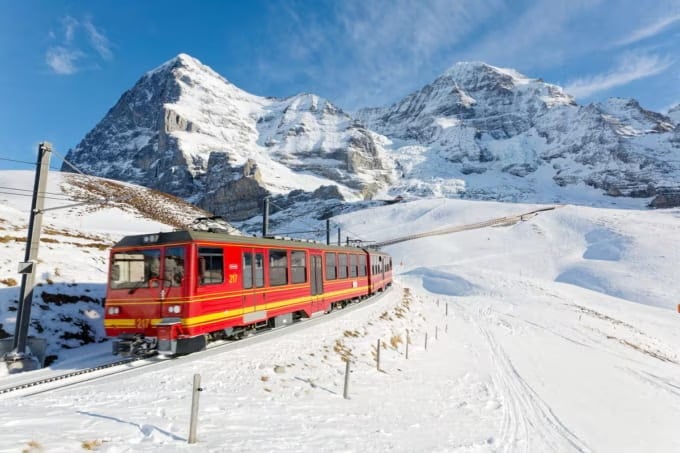
When this region became the first Alpine UNESCO World Heritage Site in 2001, it was registered as the “Jungfrau-Aletsch-Bietschhorn region.” Covering 539 square kilometers across the cantons of Bern and Valais, it included Switzerland’s three iconic peaks—the Eiger, Mönch, and Jungfrau—along with the Aletsch Glacier.
In 2007, the area was expanded to include mountains in the Bernese Alps such as the Wetterhorn and Blüemlisalp, increasing the total area to 824 square kilometers. The name was also changed to the more straightforward “Swiss Alps Jungfrau Aletsch.”
A must for Swiss tourists is the Jungfrau Railway. From the station at Kleine Scheidegg, you can view the Eiger, Mönch, and Jungfrau peaks. And from the observation deck at Jungfraujoch station (elevation 3,454 meters), the view of the Aletsch Glacier is breathtaking!
Name: Swiss Alps Jungfrau Aletsch
Address: Jungfrau, Lauterbrunnen
4. Three Castles, Defensive Wall and Ramparts of the Market-town of Bellinzona
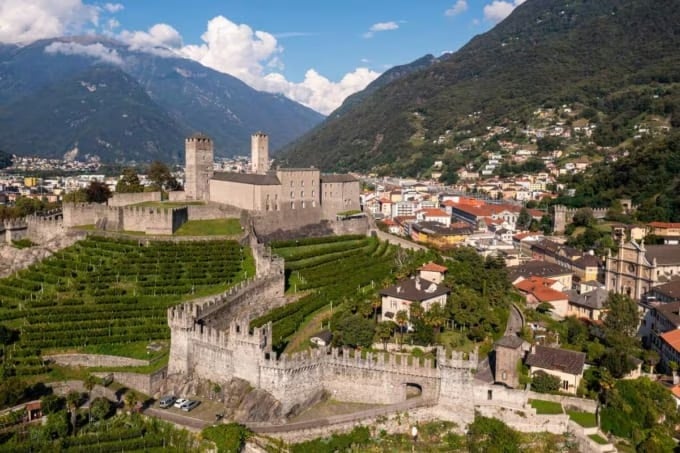
The town of Bellinzona lies in a valley leading to the Alps and was once a key transit hub. As such, it was well fortified with strong castles to guard against enemies.
Three castles—Castelgrande perched on a rocky outcrop in Ticino, Montebello on a hill to the east, and Sasso Corbaro, a bit farther away in the mountains—along with connecting walls, represent a late medieval fortification system that protected Alpine passageways. These were inscribed as a World Heritage Site in 2000 under the name “Three Castles, Defensive Wall and Ramparts of the Market-town of Bellinzona.”
All three castles are open to visitors. The oldest and most popular, Castelgrande, built by the Lombards, features a museum and restaurant, making it a favorite among tourists.
Name: Three Castles, Defensive Wall and Ramparts of the Market-town of Bellinzone
Address: Castelgrande, 6500 Bellinzona
5. The Architectural Work of Le Corbusier – An Outstanding Contribution to the Modern Movement
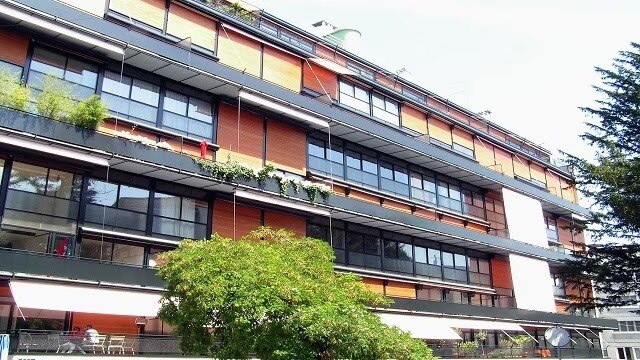
Le Corbusier, born in Switzerland, is known as the father of modern architecture and was primarily active in France.
His works are found across the globe, each of them holding significant value. For this World Heritage registration, the subtitle “An Outstanding Contribution to the Modern Movement” was added to reflect the criteria of significant contributions to modern architectural movements, and representative works that greatly influenced the movement were selected.
Seventeen buildings located in seven countries (France, Switzerland, Japan, Belgium, Germany, Argentina, India) were registered. From Switzerland, the following two were selected:
Villa Le Lac (A Little House on Lake Geneva), built in Vevey for his parents in 1924
Immeuble Clarté, a residential complex built in Geneva in 1932
Villa Le Lac is now a museum. Immeuble Clarté in Geneva is still used as a residential building and can only be viewed from the outside, but its beautiful exterior is worth a visit.
Name: The Architectural Work of Le Corbusier – An Outstanding Contribution to the Modern Movement
Official/Related Website: https://whc.unesco.org/en/list/1321/
Name: Villa Le Lac
Address: Route de Lavaux 211802 Corseaux
Official/Related Website: https://www.villalelac.ch/fr/
Name: Immeuble Clarté
Address: Rue de la Terrassière 6, 1207 Genève
Official/Related Website: https://sites-le-corbusier.org/oeuvres/immeuble-clarte-geneve%ef%bf%bc%ef%bf%bc/
6. Prehistoric Pile Dwellings around the Alps

Prehistoric Pile Dwellings around the Alps are groups of stilt houses built along the lakes and rivers surrounding the Alps. Pile dwellings are houses constructed by driving piles into lakes or wetlands and building on top of them. These dwellings were built over a long period from around 5000 BCE to 500 CE.
There are 111 archaeological sites in total across the six countries spanned by the Alps—Germany, Austria, France, Italy, Slovenia, and Switzerland. Of these, 56 sites, about half, are located in Switzerland. As a joint registration by the participating countries, they were collectively inscribed as a World Heritage Site in 2011.
In 2001, 150 years after the discovery of the ruins, the archaeological museum "Laténium" opened on the shore of Lake Neuchâtel, where a large number of artifacts were found. Here, visitors can view reconstructions of pile dwellings and valuable exhibits.
Name: Prehistoric Pile dwellings around the Alps
Address: Lac de Neuchâtel, Switzerland
7. La Chaux-de-Fonds / Le Locle, Watchmaking Town Planning
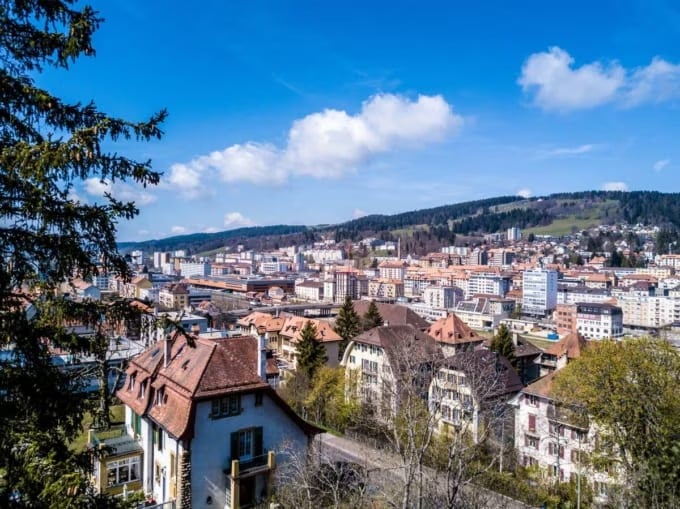
La Chaux-de-Fonds and Le Locle are two adjacent towns known as the mecca of the watch industry, and were previously designated as Swiss national heritage sites.
These towns, with a watchmaking tradition dating back to the 17th century, were reconstructed in the 19th century following a series of fires. In a rare example of urban planning for a single industry, workshops and residences were built side by side, with streets and buildings arranged in an orderly grid. The fact that the watch industry continues there to this day contributed to the site’s inscription as a cultural World Heritage Site in 2009.
La Chaux-de-Fonds is home to one of the world’s finest watch museums—a must-see. From Geneva, it takes just under two hours to get there via Neuchâtel.
Name: La Chaux-de-Fonds / Le Locle, urbanisme horloger
Address: Le Locle, Switzerland
8. The Swiss Tectonic Arena Sardona
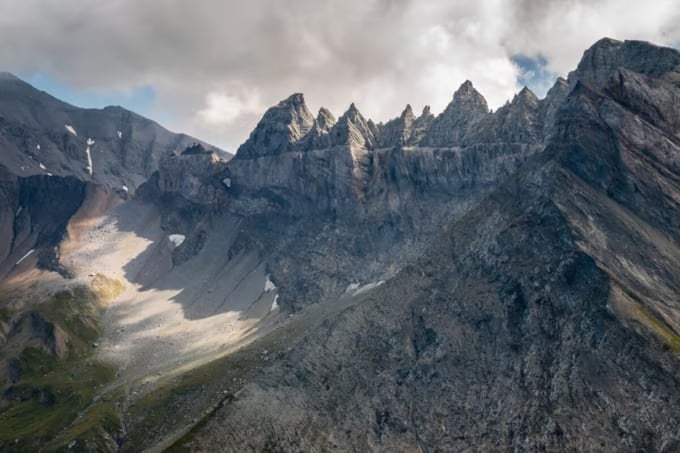
The Swiss Tectonic Arena Sardona is located in northeastern Switzerland and spans three cantons. This vast area in the Glarus Alps is surrounded by the Vorder Rhine Valley, Linth Valley, and Lake Walen. It holds major geological significance for explaining the plate tectonics theory and was inscribed as a UNESCO Natural World Heritage Site in 2008.
The plate tectonics theory posits that the Earth's surface is made up of several large plates, whose movements create various landforms. In this area, thrust faults reveal the processes and effects of mountain-building activity.
Notably, the region features a geological inversion, where older rock layers from 250 to 300 million years ago were pushed on top of newer layers from 35 to 50 million years ago due to tectonic collision. This rare phenomenon is vital in earth sciences. The site is named after Mount Sardona, located at its center.
Name: The Swiss Tectonic Arena Sardona
Address: Cantons Of Glarus, St. Gallen and Graubünden
9. Lavaux, Vineyard Terraces

Switzerland is a well-kept secret as a wine-producing country. Among its regions, Lavaux is especially famous for the beauty of its terraced vineyards that stretch across the hills along Lake Geneva. Lavaux’s vineyards were registered as a UNESCO Cultural World Heritage Site in 2007.
The glistening Lake Geneva, the majestic Alps, the terraced vineyards, the small villages where grape farmers live, and the traditions and history of winemaking all contributed to the site’s registration.
The original form of these vineyards is believed to date back to the 11th century when the area was under monastic control, giving it a history of over 1,000 years. There are hiking trails that take you through the vineyards, making it an easily accessible heritage site. Try visiting it along with the nearby Château de Chillon.
Name: Lavaux, Vineyard Terraces
Address: Lavaux, Canton de Vaud
10. Monte San Giorgio
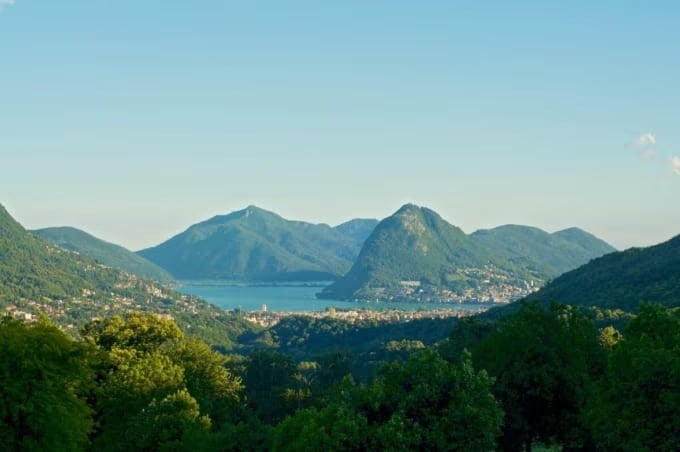
Monte San Giorgio lies on the border of Italy and Switzerland, just south of Lake Lugano. At 1,096 meters in elevation, it’s a modest mountain that drew worldwide attention after over 10,000 fossils of Triassic-period creatures—such as the early dinosaurs Ticinosuchus and Tanystropheus, as well as marine reptiles and invertebrates—were discovered here.
It’s astonishing to think that the Triassic period dates back around 240 million years. The excavation site at Monte San Giorgio is frequently visited by researchers and students.
The area also features well-maintained hiking trails, allowing you to walk where ancient reptiles once roamed—a rare and special experience.
Name: Monte San Giorgio
Address: Brusino Arsizio, Svizzera
11. Benedictine Convent of St John at Müstair
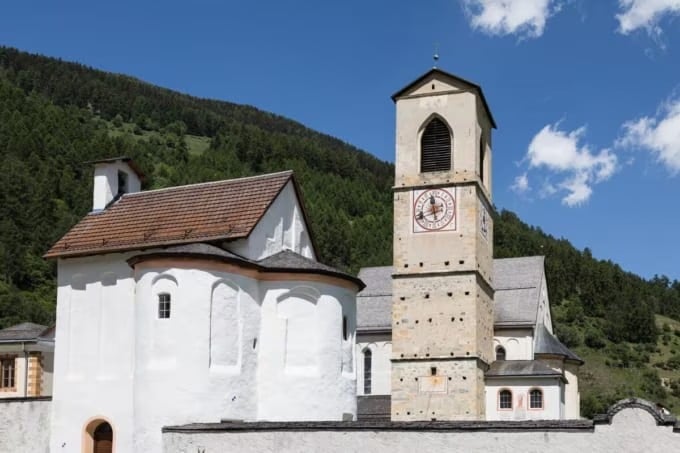
Registered as a World Heritage Site in 1983, the Benedictine Convent of St John is located in the tiny village of Müstair in the eastern Swiss canton of Graubünden.
Despite the village having fewer than 1,000 residents, it is home to a large and historically significant monastery. Built in the 8th century under the order of Charlemagne by the Bishop of Chur, it has functioned continuously as a nunnery since 1167, making it an invaluable architectural and cultural treasure.
Though simple in exterior, the convent is exceptionally well-preserved. Inside, it houses Romanesque frescoes from the 9th to 12th centuries, including 82 biblical scenes painted more than a millennium ago. During restoration work in the late 19th and mid-20th centuries, even older frescoes were discovered beneath the newer ones, drawing further scholarly interest.
Name: Benedictine Convent of St John at Müstair
Address: Museum & Butia Kloster St. Johann 7537 Müstair
12. Abbey of St Gall
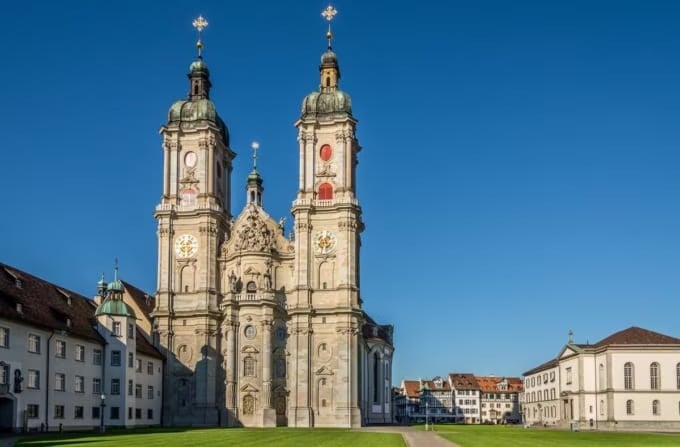
The Abbey of St Gall originated from a small hermitage founded in 612 by the monk Gallus. It evolved into a full monastery in the 8th century and became a renowned center of learning and knowledge throughout medieval Europe.
Although it is no longer used as a monastery today, the abbey’s baroque building—renovated in the 18th century and considered a masterpiece of architecture—remains. Visitors can explore its attached library, which houses precious historical documents, including 9th-century architectural blueprints.
Its historical significance, majestic architecture, invaluable manuscripts, and contributions to education earned it a spot on the World Heritage list in 1983.
Name: Abbey of St Gall
Address: Klosterhof 6, St. Gallen 9000, Switzerland
◎ Summary of All 12 World Heritage Sites in Switzerland
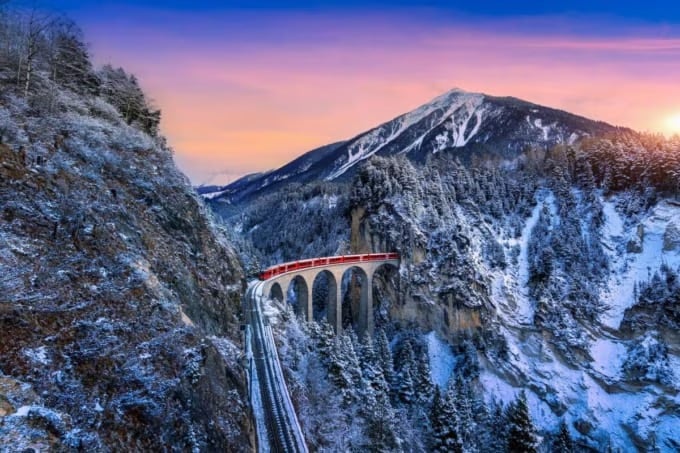
Switzerland is extremely tourist-friendly, with a highly developed public transport system including trains, buses, mountain railways, cable cars, gondolas, and sightseeing boats. Above all, it's a safe country with kind locals, plenty of clean accommodations, and well-equipped tourist information centers—making it a very comfortable destination for travelers.
Although prices tend to be on the higher side, tourists can make use of various discount tickets and rail passes to travel more economically. A wealth of fascinating World Heritage Sites awaits you!
RELATED ARTICLES
REGIONS
CATEGORIES
FEATURED ON Switzerland
-
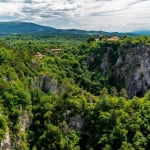
Introducing All 5 World Heritage Sites in Slovenia! Explore the Magnificent World Heritage of This Small Country
-
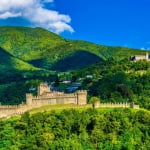
A World Heritage Site Under Constant Threat! The Three Castles and Defensive Walls of the Old Town of Bellinzona
-
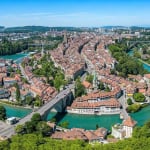
【World Heritage Site】Old Town of Bern|A Medieval City Surrounded by a Curving River and Cobbled Streets
-

32 Must-Visit Tourist Attractions in Switzerland
-

Here Are the Real Castles That Inspired Disney Princess Castles! 5 Must-Visit Castles Around the World
MOST POPULAR ON Switzerland
-
 1
1Doha: Must-see Attractions in the Capital of Qatar
-
 2
2Toronto: 10 Things to do in this Picturesque Canadian City
-
 3
3Amarillo: A City Famous for It’s Amazing Canyons, Great History and Music
-
 4
4South Korea: Dazzling Scenery, Rich Culture and Fascinating History
-
 5
5Kuwait: A Country in Middle East Asia Famous for Hot Sand Dunes and Stunning Cityscape





